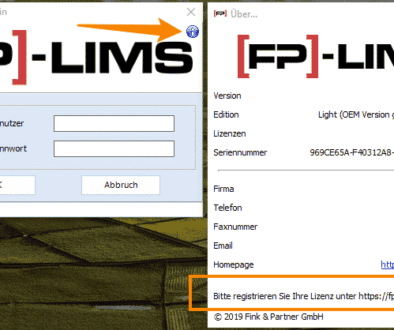
What is Quality Management anyway?
What is Quality Management anyway? Quality Management is the process of ensuring that an organization’s products and services meet or exceed customer expectations. It involves planning, implementing, and monitoring a variety of techniques and tools to ensure that quality is consistently maintained. Quality management is essential for organizations that want to ensure customer satisfaction and loyalty.
ISO 9001:2015 is the international standard specifying requirements for quality management systems. It is the most prominent approach to quality management and has been widely adopted by organizations around the world. The standard helps organizations ensure that their products and services meet customer expectations and comply with applicable regulations.
Benefits of Quality Management Systems
The ISO 9000 family of quality management systems (QMS) standards is a set of guidelines that businesses can follow to improve the quality of their products and services. A documented QMS can help organizations achieve consistent results in everything they do, from production to customer service.
Benefits of implementing a QMS include improved product quality, reduced waste and scrap, increased efficiency, and better customer satisfaction. In addition, a QMS can help organizations meet regulatory requirements and maintain compliance with industry standards.
Key components of a QMS include policies and procedures, process controls, training and education, corrective and preventive action (CAPA), supplier management, and self-assessment. A well-designed QMS should be tailored to the specific needs of the organization it serves.
What is QMS? Benefits of Quality Management Systems at a glance:
- Defining, improving, and controlling processes
- Reducing waste
- Preventing mistakes
- Lowering costs
- Facilitating and identifying training opportunities
- Engaging staff
- Setting organization-wide direction
- Communicating a readiness to produce consistent results
Quality Management Standards: ISO 9001:2015 and others
ISO 9001:2015 is the most recognized and implemented quality management system standard in the world. Organizations that have it in place enjoy a wide range of benefits, such as improved customer satisfaction, reduced costs, and increased efficiency. However, ISO 9001:2015 is not the only quality management system standard out there. Other popular standards include AS9100D, ISO 13485:2016, and TS 16949:2009.
Each of these standards has its own unique set of requirements and benefits. It’s important to understand the differences between them so you can choose the right one for your organization. AS9100D is focused on aerospace and defense organizations, while ISO 13485:2016 is specific to medical device manufacturers. TS 16949:2009 is tailored for automotive companies.
Requirements of a Quality Management System (QMS)
When asking the question “What is quality management?” one should also consider the topic “Requirements of a QMS”. A Quality Management System (QMS) is a system that is used to ensure that an organization can deliver products and services that meet customer and regulatory requirements. The requirements of a QMS vary depending on the organization, but typically include the following:
- The organization must have a clear understanding of what quality means to them, and what their customers expect from them.
- Quality objectives must be established and documented.
- Procedures must be in place for managing and measuring quality.
- Resources must be allocated to support the QMS.
- The organization must have a system for documenting and tracking improvements to the QMS.
Establishing a Quality Management System
If you’re looking to establish a quality management system (QMS), it’s important to understand the different aspects that need to be considered before implementation. The goal of a QMS is to ensure that all products and services meet customer requirements and are consistently reliable.
Basic steps implementing a Quality Management System
There are a number of basic steps that businesses should take to implement a QMS.
Design and build
A quality management system (QMS) is a formalized system for managing the quality of a product or service. The design and build portions of creating a QMS serve to develop the structure of the QMS, its processes, and plans for implementation. Senior management should oversee these portions to ensure that the QMS meets the organization’s needs and is effective in producing high-quality products or services.
Deploy
Deployment of a quality management system (QMS) can be a daunting task. It is best served in a granular fashion by breaking each process down into subprocesses and educating staff on documentation, education. Deployment should also include a plan for continual improvement of the QMS. Quality assurance should be included throughout the process to ensure that the QMS is meeting its objectives.
Control and Measure
The effectiveness of a quality management system (QMS) depends largely on the ability to control and measure critical processes and products. Control means establishing procedures and measures that ensure outputs meet requirements. Measurement involves determining the results of these controls and taking corrective action as needed. Both control and measurement are accomplished through routine, systematic audits of the QMS.
Audits verify that the controls are in place and effective and that measurements are accurate. They also identify any areas where improvements may be needed. Auditors must have a thorough understanding of the QMS, as well as the procedures they are auditing. They must also be able to evaluate results objectively, identify trends, and recommend corrective action.
Effective control and measurement are essential to maintaining a high level of quality in products and processes.
Review and improve
Auditing is the process of assessing the quality of a system or process. The results of an audit can be used to improve the effectiveness and efficiency of a system. One goal of quality management is to ensure that the results of audits are properly handled. This includes ensuring that the results are analyzed and that corrective action is taken when necessary.
The role of LIMS for Quality Management Systems
LIMS systems can play an important role in quality management by automating and tracking laboratory processes. A well-designed LIMS system can help to ensure that data is accurate and reliable, which can be critical for ensuring product quality. In addition, LIMS systems can help to identify potential problems and track corrective actions.
But what is LIMS? LIMS, or Laboratory Information Management System, is a software application used in quality management and laboratory settings. It enables users to manage and track data related to tests and experiments, as well as the laboratory equipment and supplies used in those tests. The data can be entered manually or retrieved from electronic devices such as barcode scanners or test tubes. This information is then used to generate reports that help managers and scientists improve the quality of their work.


